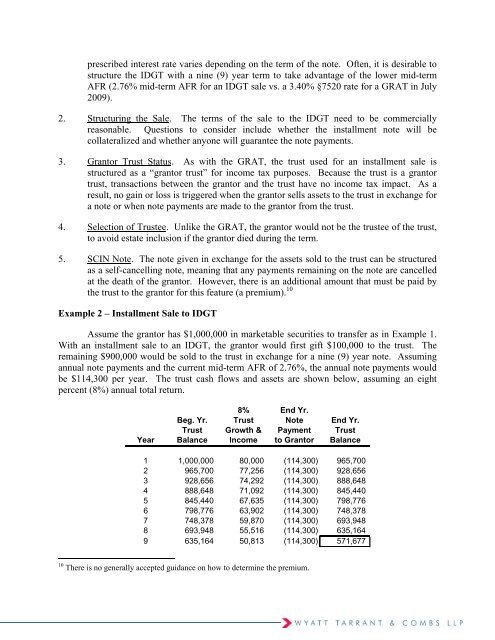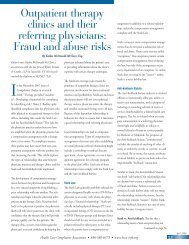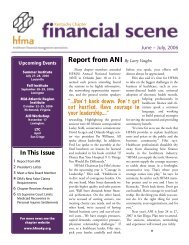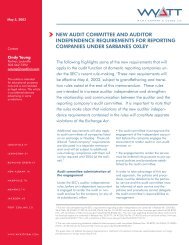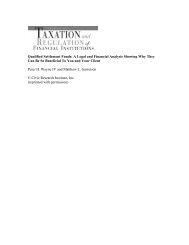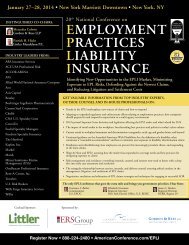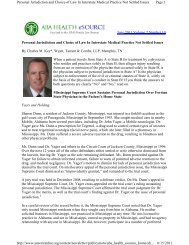Estate Planning in a Low Interest Rate Environment – Grantor ...
Estate Planning in a Low Interest Rate Environment – Grantor ...
Estate Planning in a Low Interest Rate Environment – Grantor ...
You also want an ePaper? Increase the reach of your titles
YUMPU automatically turns print PDFs into web optimized ePapers that Google loves.
prescribed <strong>in</strong>terest rate varies depend<strong>in</strong>g on the term of the note. Often, it is desirable to<br />
structure the IDGT with a n<strong>in</strong>e (9) year term to take advantage of the lower mid-term<br />
AFR (2.76% mid-term AFR for an IDGT sale vs. a 3.40% §7520 rate for a GRAT <strong>in</strong> July<br />
2009).<br />
2. Structur<strong>in</strong>g the Sale. The terms of the sale to the IDGT need to be commercially<br />
reasonable. Questions to consider <strong>in</strong>clude whether the <strong>in</strong>stallment note will be<br />
collateralized and whether anyone will guarantee the note payments.<br />
3. <strong>Grantor</strong> Trust Status. As with the GRAT, the trust used for an <strong>in</strong>stallment sale is<br />
structured as a “grantor trust” for <strong>in</strong>come tax purposes. Because the trust is a grantor<br />
trust, transactions between the grantor and the trust have no <strong>in</strong>come tax impact. As a<br />
result, no ga<strong>in</strong> or loss is triggered when the grantor sells assets to the trust <strong>in</strong> exchange for<br />
a note or when note payments are made to the grantor from the trust.<br />
4. Selection of Trustee. Unlike the GRAT, the grantor would not be the trustee of the trust,<br />
to avoid estate <strong>in</strong>clusion if the grantor died dur<strong>in</strong>g the term.<br />
5. SCIN Note. The note given <strong>in</strong> exchange for the assets sold to the trust can be structured<br />
as a self-cancell<strong>in</strong>g note, mean<strong>in</strong>g that any payments rema<strong>in</strong><strong>in</strong>g on the note are cancelled<br />
at the death of the grantor. However, there is an additional amount that must be paid by<br />
the trust to the grantor for this feature (a premium). 10<br />
Example 2 <strong>–</strong> Installment Sale to IDGT<br />
Assume the grantor has $1,000,000 <strong>in</strong> marketable securities to transfer as <strong>in</strong> Example 1.<br />
With an <strong>in</strong>stallment sale to an IDGT, the grantor would first gift $100,000 to the trust. The<br />
rema<strong>in</strong><strong>in</strong>g $900,000 would be sold to the trust <strong>in</strong> exchange for a n<strong>in</strong>e (9) year note. Assum<strong>in</strong>g<br />
annual note payments and the current mid-term AFR of 2.76%, the annual note payments would<br />
be $114,300 per year. The trust cash flows and assets are shown below, assum<strong>in</strong>g an eight<br />
percent (8%) annual total return.<br />
8% End Yr.<br />
Beg. Yr. Trust Note End Yr.<br />
Trust Growth & Payment Trust<br />
Year Balance Income to <strong>Grantor</strong> Balance<br />
1 1,000,000 80,000 (114,300) 965,700<br />
2 965,700 77,256 (114,300) 928,656<br />
3 928,656 74,292 (114,300) 888,648<br />
4 888,648 71,092 (114,300) 845,440<br />
5 845,440 67,635 (114,300) 798,776<br />
6 798,776 63,902 (114,300) 748,378<br />
7 748,378 59,870 (114,300) 693,948<br />
8 693,948 55,516 (114,300) 635,164<br />
9 635,164 50,813 (114,300) 571,677<br />
10 There is no generally accepted guidance on how to determ<strong>in</strong>e the premium.


